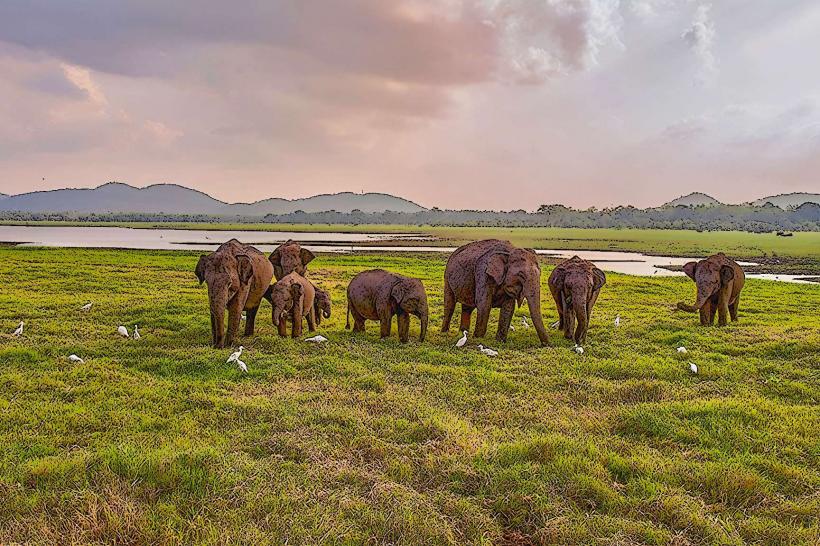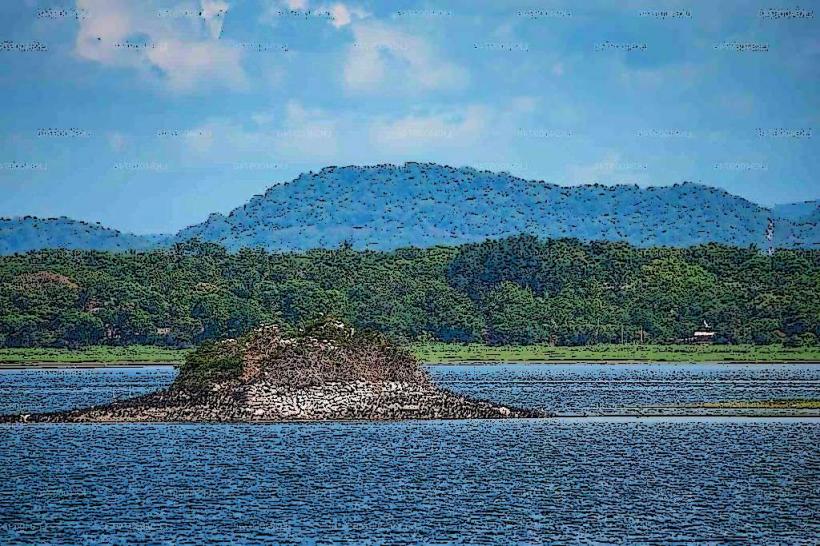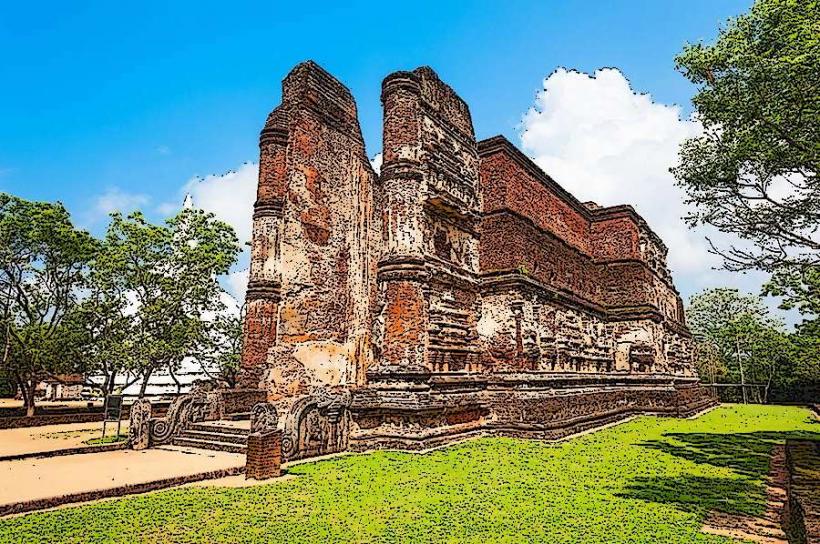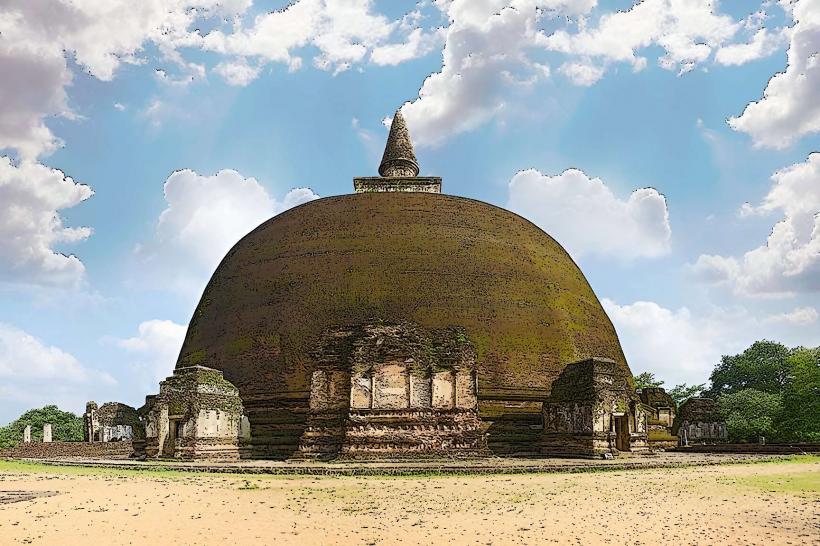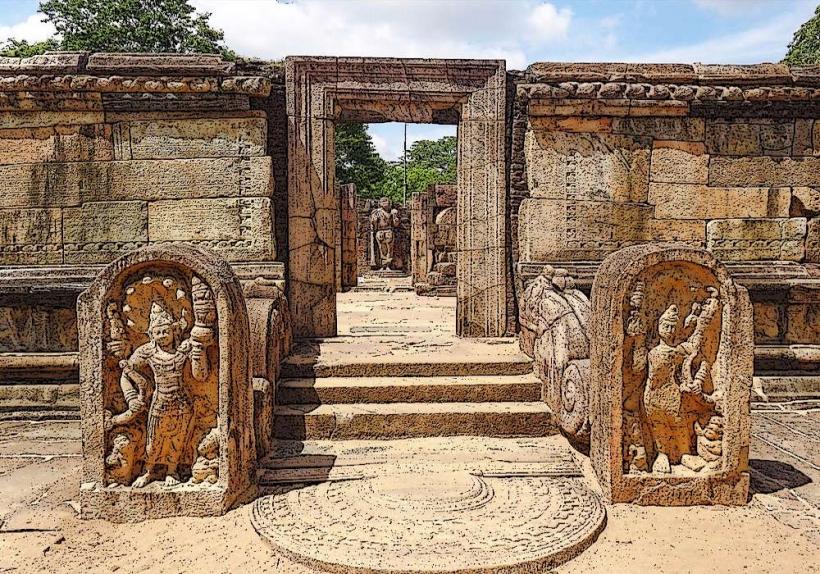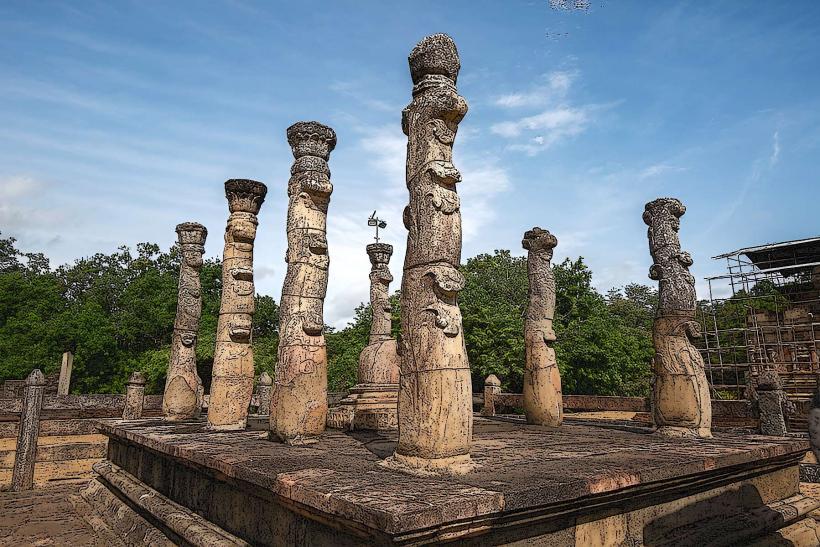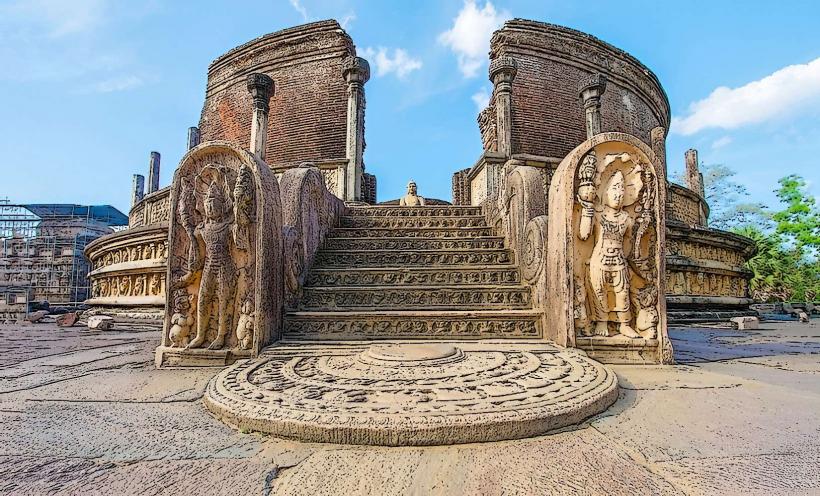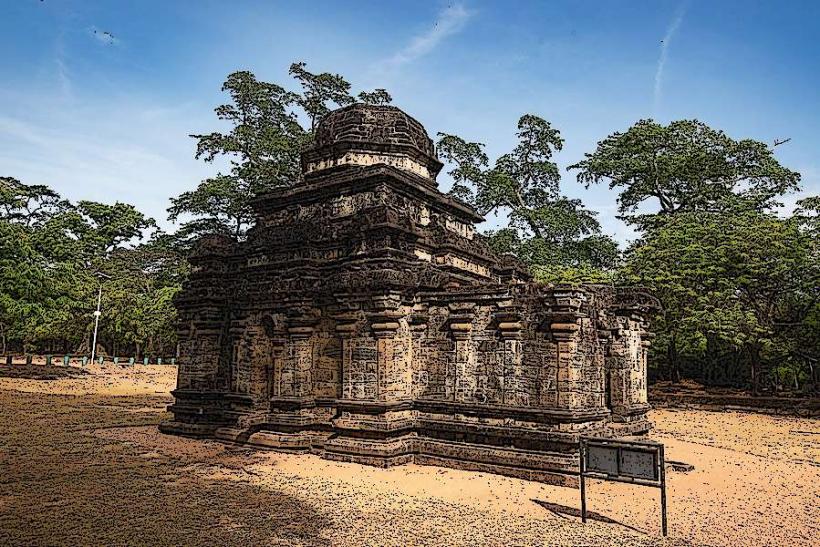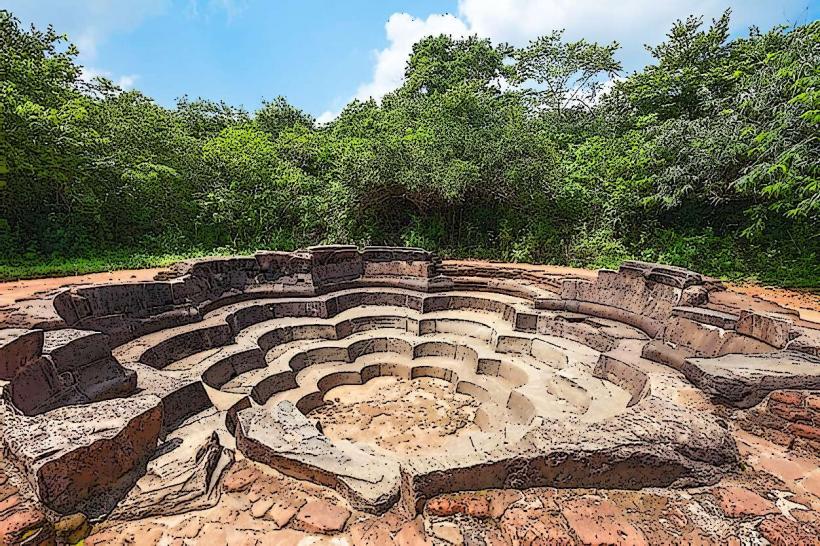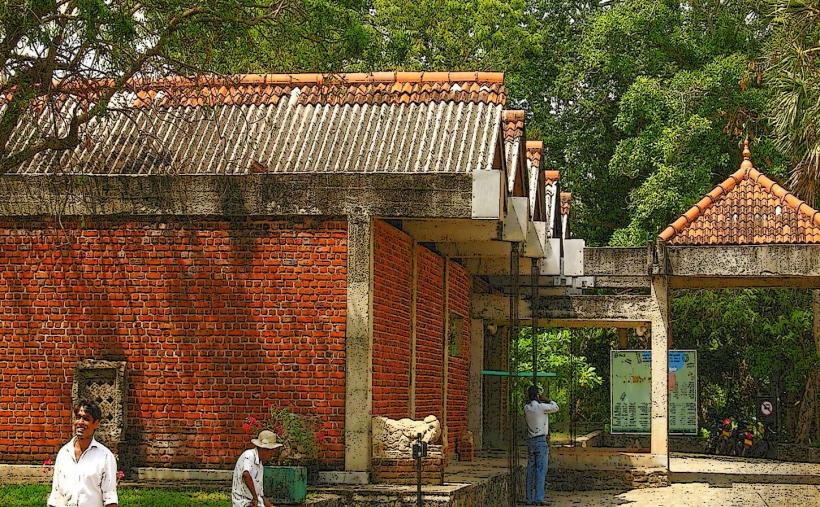Information
Landmark: Gal ViharaCity: Polonnaruwa
Country: Sri Lanka
Continent: Asia
Gal Vihara, Sri Lanka
Gal Vihara is a renowned archaeological site located in Polonnaruwa, in the North Central Province of Sri Lanka. The site is famous for its impressive rock-cut statues of Buddha, making it one of the most significant Buddhist landmarks in Sri Lanka. The statues, carved into the granite rock, are considered masterpieces of ancient Sri Lankan sculpture and are a testament to the artistic and religious achievements of the Polonnaruwa Kingdom.
Overview
- Name: Gal Vihara (also known as Gal Viharaya or Gal Vihara Temple)
- Location: Polonnaruwa, North Central Province, Sri Lanka
- Type: Buddhist Temple, Rock-Cut Statues, Archaeological Site
- Date: 12th century CE (reign of King Parakramabahu I)
- UNESCO World Heritage Site: Part of the Ancient City of Polonnaruwa, which is a UNESCO World Heritage Site
- Key Features: Large Buddha statues carved in rock, intricate sculpture work
Historical and Cultural Significance
Construction Under King Parakramabahu I:
- Gal Vihara was constructed during the 12th century under the reign of King Parakramabahu I, one of the most prominent rulers of the Polonnaruwa Kingdom (r. 1153–1186 CE). The site is believed to have been a significant Buddhist monastic complex, reflecting the king's devotion to Buddhism and his efforts to promote the faith in Sri Lanka.
Cultural Importance:
- The statues at Gal Vihara are not only religious symbols but also embody the artistic and cultural achievements of the Polonnaruwa period. The sculptures represent key aspects of Buddhist iconography and showcase the development of Sri Lankan sculpture.
- The site is an important pilgrimage destination for Buddhists and is visited by people from all over Sri Lanka and beyond. The images of the Buddha symbolize the principles of compassion, wisdom, and serenity that are central to Buddhist teachings.
Key Features and Statues
Gal Vihara is renowned for its four remarkable statues of the Buddha, all of which are carved directly into a single granite rock face. The statues are masterpieces of Buddhist art and sculpture, showcasing different postures and expressions of the Buddha. Each of these statues is significant in both its religious symbolism and artistic mastery.
The Reclining Buddha:
- The most famous and largest of the statues at Gal Vihara is the Reclining Buddha. This statue, which is 14 meters long, depicts the Buddha in a peaceful, reclining posture, symbolizing the Parinirvana (the Buddha’s passing into nirvana). The Buddha is shown lying on his right side, with his head supported by a cushion, and his expression exudes a sense of serenity and calm.
- The reclining posture is a common representation of the Buddha’s final moments and is an important aspect of Buddhist iconography, symbolizing his release from the cycle of birth and death.
The Standing Buddha:
- Another significant statue at Gal Vihara is the Standing Buddha. This statue stands at about 7 meters tall and shows the Buddha in a posture of serene composure, with his right hand raised in the traditional abhaya mudra (gesture of fearlessness). The standing position conveys the Buddha’s strength, peace, and spiritual authority.
- The statue is a fine example of Sri Lankan sculpture, with smooth, graceful lines and intricate details.
The Seated Buddha:
- The Seated Buddha statue is another key feature of Gal Vihara. This seated figure represents the Buddha in meditation, sitting cross-legged in a typical lotus position with a calm and composed expression. The seated posture symbolizes the Buddha's meditative state and his attainment of enlightenment under the Bodhi tree.
- This statue stands out for its detailed carvings and the serene expression on the Buddha’s face.
The Buddha with Hands in Dhyana Mudra:
- Another seated statue shows the Buddha in Dhyana Mudra (the gesture of meditation), with both hands placed on his lap in a symbolic manner. The statue’s serene expression and calm posture emphasize the Buddha’s state of deep meditation and his spiritual enlightenment.
Artistic Features and Symbolism
Rock-Cut Sculpture:
- All the statues at Gal Vihara are carved directly into the granite rock, a characteristic feature of ancient Sri Lankan rock-cut architecture. The rock surface is smoothed and polished to create the statues, and the intricate details of the figures, such as facial features, robes, and hand gestures, display a high level of artistic craftsmanship.
Facial Expressions:
- The facial expressions of the Buddha statues at Gal Vihara are a standout feature. They exude an air of serenity, compassion, and wisdom, embodying the central values of Buddhism. The calm and tranquil expressions reflect the Buddha’s enlightened state, and each statue communicates a sense of inner peace.
Attention to Proportions:
- The statues at Gal Vihara are notable for their well-proportioned figures, with careful attention to the anatomy and symmetry of the Buddha’s body. This reflects the advanced understanding of human proportions and the technical skill of the sculptors during the Polonnaruwa period.
Influence of Ancient Buddhist Art:
- The sculptures at Gal Vihara are influenced by the broader tradition of Indian and Sri Lankan Buddhist art. The depiction of the Buddha in various postures and mudras, such as the reclining, standing, and seated positions, follows the established Buddhist iconographic traditions that date back to earlier periods in Indian and Sri Lankan history.
Significance of the Site
Religious Importance:
- Gal Vihara holds great religious significance as a Buddhist pilgrimage site. The statues represent key moments in the Buddha’s life and teachings, such as his Parinirvana, his enlightenment, and his role as the teacher of the Dharma. The site continues to be a place for meditation and spiritual reflection for pilgrims and visitors.
Cultural Heritage:
- The statues and the site itself reflect the cultural achievements of the Polonnaruwa Kingdom, one of the greatest ancient Sri Lankan civilizations. The sculptures are a part of Sri Lanka’s rich artistic and architectural heritage and are studied for their historical value, craftsmanship, and their depiction of the Buddha in various symbolic postures.
UNESCO World Heritage:
- As part of the Ancient City of Polonnaruwa, Gal Vihara is a UNESCO World Heritage Site. The site's recognition underscores its importance as a key archaeological and cultural site in Sri Lanka, attracting tourists, scholars, and Buddhists from around the world.
Visitor Experience
Exploring the Site:
- Visitors to Gal Vihara can walk around the rock-cut statues and appreciate the scale and artistic beauty of the Buddha figures. The peaceful environment of the site offers an opportunity for contemplation and reflection, especially given its spiritual significance.
- The site is relatively easy to access and is well-preserved, making it an important stop for tourists visiting Polonnaruwa.
Cultural and Spiritual Insight:
- Beyond the visual appeal of the statues, the site offers visitors a deeper cultural and spiritual insight into the Buddhist heritage of Sri Lanka. The peaceful atmosphere and the historical context of the site enhance the visitor’s understanding of Sri Lanka’s religious traditions and the role of Buddhism in shaping the island’s culture.
Conclusion
Gal Vihara is one of the most impressive and significant Buddhist sites in Sri Lanka, known for its masterful rock-cut statues of the Buddha. With its combination of artistic craftsmanship, religious symbolism, and historical importance, Gal Vihara stands as a testament to the cultural and spiritual achievements of the Polonnaruwa Kingdom. The site is a must-visit for anyone interested in the art and history of ancient Sri Lanka and the Buddhist traditions of the island.

